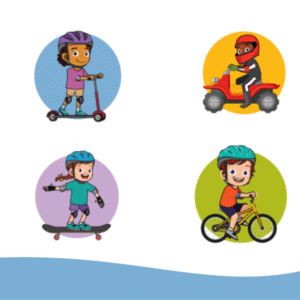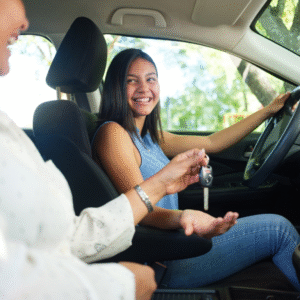how to protect kids from dog bites
avoid serious injury from dog bites with these safety tips

Children and dogs can often be best buddies; but, kids are not always taught how to safely act around their canine friends. In 2023, Dayton Children’s saw over 330 children with dog bite injuries, and 41 of those kids were admitted to the hospital because of the severity of their injuries.
“Most young children are about the same size or smaller than dogs and the dogs may see these children as a threat,” stated Dr. John Crow, Trauma Medical Director at Dayton Children’s. “It’s critical that parents teach their children how to interact with dogs to prevent injuries. Just because a dog has never bitten, does not mean that it won’t get scared and bite in defense. Dayton Children’s has seen an increase in dog bite injuries specifically related to children getting into the dog’s food.”
7 precautions to take to prevent dog bites
Dayton Children’s recommends parents and caregivers work with their children on the following 7 skills to protect them from dog bites:
- Learn to approach a dog. The proper way to interact with a dog is by coming up to them from the front or the side, holding your hands low and allowing the dog to smell you first before you pet it. Adults should demonstrate the right way to approach a dog so that kids learn to follow them.
- Use gentle hands and speak softly. Surprising a dog from behind, waving hands or yelling can scare them and cause them to bite.
- Let dogs eat in peace. A dog that is eating may think their food is going to be taken away. Reinforce to kids that they are to leave dogs alone until the dog is done eating.
- Watch out for doggie toys. Tell your child, “Some dogs have strong feelings about their chew toys – just like you do with your favorite toys! You wouldn’t want someone to grab your favorite toy away from you, so don’t take a bone or toy from a dog’s mouth.”
- Respect a dog’s space. Dogs naturally protect their territories. Sticking a hand inside a strange dog’s pen, through a fence or in a car window where a dog is sitting may cause them to protect their property and bite.
- Do not run from a dog. A dog’s instinct is to chase and catch you. Stay still when approached by an unfamiliar dog. If knocked over by a dog, roll into a ball and lie still.
- Tell an adult immediately if your child notices a dog acting strangely or if they are ever bitten by a dog!
planning for a new puppy
Bringing a new furry best friend home can be exciting! But make sure that you have done extensive research on the dog’s background to avoid adopting a dog with an aggressive history. You can also consider these six points to protect the children in your home and your new puppy!
- Spend time with the dog before buying or adopting it. Be extremely careful when adding a dog to a home with an infant or toddler. Make sure your children are comfortable around dogs before getting one.
- Consider spaying or neutering nearly every dog, this can help reduce aggressive behavior.
- Supervise infants and young children around dogs.
- Be a responsible dog owner. License your dog as required by law and provide regular veterinary care, including rabies vaccinations. Don’t allow your dog to roam alone.
- Teach and train dogs when they join your home. Teach the dog submissive behavior (i.e., rolling over to expose abdomen and relinquishing food without growling).
- Make your dog a member of the family. Dogs who spend a great deal of time alone in the backyard or tied to a chain often become dangerous. Dogs who are well socialized and supervised are much less likely to bite.
You can make an effort to keep humans and dogs safe and happy by reading these pet safety tips.
care that goes above and beyond
Because every child deserves care that goes above and beyond, Dayton Children’s provides compassionate, expert care for kids of all ages. Find a provider, schedule an appointment, or learn more about conditions we treat today.




